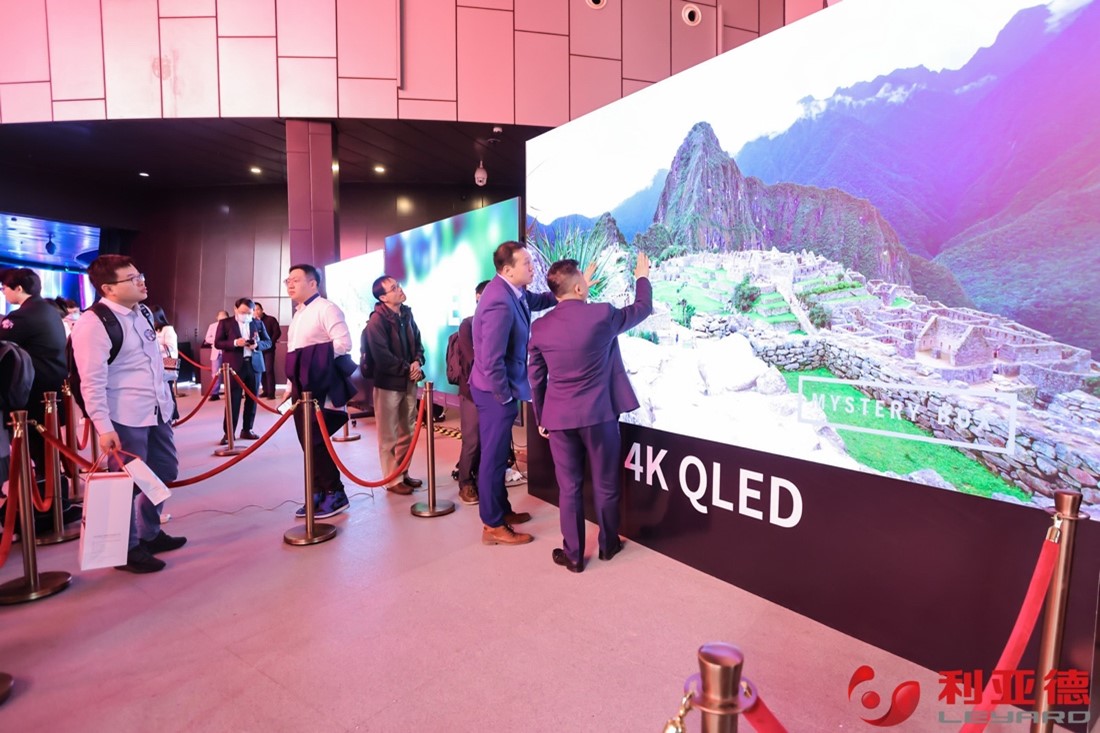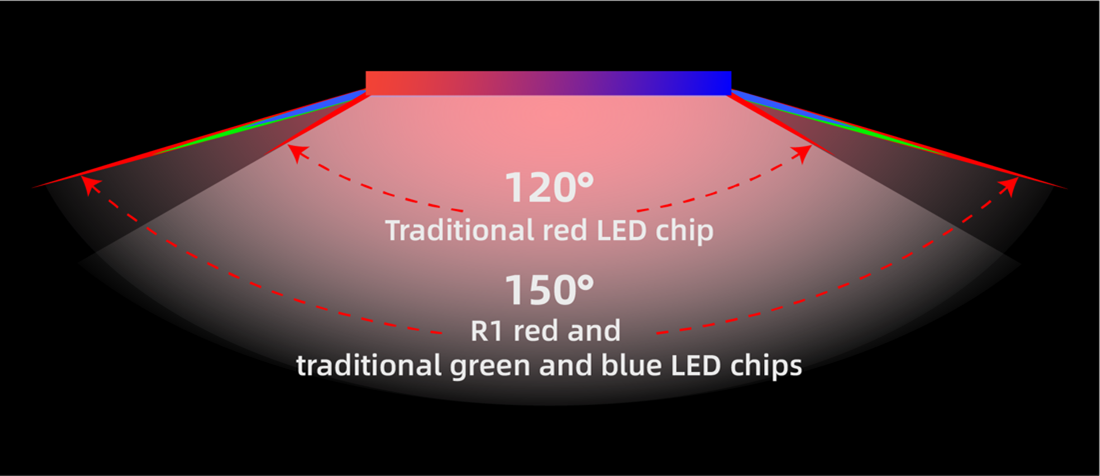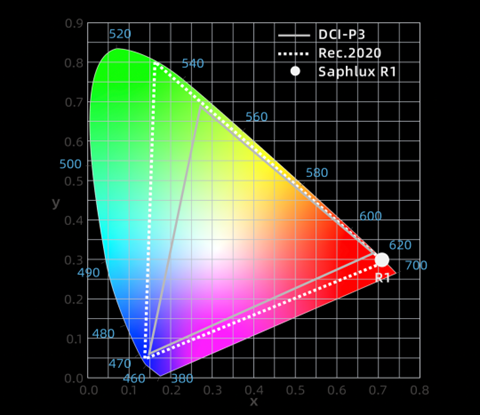Quantum dots have long been the secret weapon in the world of LCD backlights, offering a narrow emission spectrum, high color purity, and saturation, and the ability to achieve a wide color gamut. However, there has not been a direct-emitting quantum dot
LED display on the market.
Until recently, Saphlux Inc. and Leyard Group have unveiled the world's first 4K 162-inch direct-emitting QLED display at their annual investor conference. This groundbreaking display is a game-changer in the world of screens, as it marks the first time that quantum dots have been made direct emitting in a QLED screen.
Let's dive deep into the technical details behind this achievement and learn how direct-emitting QLED display differs from traditional displays.

The QD-in-chip technology
The remarkable breakthrough technology of QD-in-chip is made possible by Saphlux's Nanoporous with Quantum Dot (NPQD) technology. This unique approach creates a nanoporous structure on the gallium nitride structure of the LED itself, allowing gallium nitride to serve as a natural quantum dot carrier. This eliminates the need for additional colloidal structures, simplifying the manufacturing process and increasing efficiency and reliability. This technology has solved several problems associated with traditional red light chips, such as poor viewing angles, low efficiency, and temperature sensitivity. Thanks to this breakthrough technology, Saphlux has successfully achieved mass production and released large-screen products.
The following figure indicates that the NPQD LED chip is 3-8 times more efficient than the quantum dot colloid LED chip under the same 12-micron quantum dot thickness. The NPQD LED chip has broken through the bottleneck of quantum dot reliability and shows almost no attenuation during accelerated aging tests at high currents and high brightness.
With Saphlux's NPQD technology, in-situ encapsulation of quantum dot chips has become a reality, which offers enormous potential for future products.

Technical features of the QLED display
By incorporating Saphlux's R1 chip, Leyard, Saphlux, and their industry partners have collaborated to create the 4K direct-emitting QLED display as a world-class experience. This impressive screen boasts a resolution of 3840*2160, a contrast ratio of 15000:1, and a refresh rate of 7680Hz. Let's take a closer look at the outstanding technical features of this QLED display:
More consistent half-power viewing angle
By using blue LED and quantum dot conversion technology, the half-power viewing angle of the red LED chip has been significantly increased from 120° to about 150°. This achievement has solved the problem of color shift caused by inconsistent half-power viewing angles of RGB chips, resulting in a more consistent and accurate color representation across the screen.
Furthermore, as all three color chips are based on gallium nitride material, they share the same voltage, which simplifies driving and control, reducing the complexity of the manufacturing process. This makes the technology more accessible to manufacturers and allows for more widespread adoption of this breakthrough technology.
By addressing these issues, this technology enhances the overall viewing experience by providing more accurate and consistent colors, as well as simpler and more streamlined manufacturing processes.

Better Color Uniformity
The QLED direct display screen utilizes the color uniformity of quantum dots to achieve an exceptional degree of consistency within a narrow range of ±0.2nm for the red color across the entire screen. This level of consistency is over one order of magnitude better than the traditional red 5nm bin, significantly improving the color uniformity of the entire screen.
Wider Color Gamut
The red color of this QLED display has reached the BT2020 standard. As subsequent green and other wavelength chip products are gradually introduced, an even broader color gamut can be achieved, offering users a new and enhanced color experience.

The world's first direct-emitting QLED display that passed rigorous reliability tests
The direct-emitting QLED display has passed rigorous reliability tests, paving the way for its commercialization. Using in-situ packaging of quantum dot chips and comprehensive screen protection, the display underwent 2000 hours of on-screen reliability testing and 500 hours of high-temperature and high-humidity testing with flying colors.
This significant achievement demonstrates the durability and longevity of the direct-emitting QLED display and is a testament to the innovative technology behind it. With its passing of these reliability tests, the display is now ready for commercialization, providing users with an exceptional viewing experience that is both reliable and long-lasting.
Passed 2000 hours of on-screen reliability testing
Passed 500 hours of high-temperature and high-humidity testing
This release of the direct-emitting display QLED is a significant milestone in the evolution of display technology. The successful combination of quantum dot and LED technologies has resulted in a display with unparalleled color accuracy and cutting-edge performance, representing a new era in visual display technology, and providing a powerful tool for businesses and consumers alike. We anticipate that this breakthrough will profoundly impact the visual display industry, ushering in a new era of innovation and advancement.
If you would like to know more details , please contact:





 CN
TW
EN
CN
TW
EN












